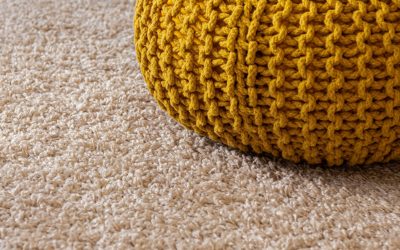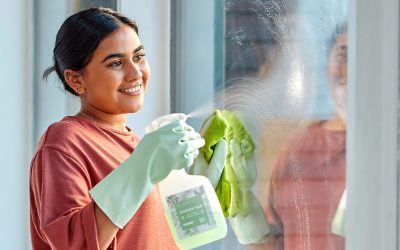Clean and fresh carpet should smell clean and fresh – so if your nose is telling you that something is off, it shouldn’t be ignored. In some cases, it cannot and will not be ignored!
Smells can develop over time in carpets from a variety of sources and it is important to remember that an odour is a symptom of a problem, not the problem itself. So if you smell something isn’t right, you’ll want to get to the bottom of it as it is more than likely going to have an impact on the health of your home environment (Click here for more about carpets & health). In this article we will discuss:
- Causes of carpet odours (before & after cleaning)
- Remedies for such odours
- Things to AVOID ever doing to any carpet (Must Read)
Let’s jump right into the common causes of carpet odours starting with those that accumulate over time and use:

Moisture
Whether it is from humid weather, a faulty HVAC system or leaks or spills in your home, excess water and carpet is not a good combination. Minor dampness, especially when prolonged, can be a catalyst for the growth of various types of mould. If the carpets get very wet, and especially if this excess moisture is not removed quickly, then you can also expect odours from the carpet backing and underlay as well as the possibility of colour transference stains or cellulose browning.
| Do you know the difference between mould, mildew and fungi? |
Fungi represent an entire kingdom of organisms that includes what is referred to as mould and mildew – so fungus can be used as an umbrella term for both mould and mildew. Mould refers to all microscopic species of fungi that grow in branching filaments (hyphae). So mould can be used as an umbrella term for mildew. Mildew is a fairly generic term that refers to visible mould typically on moist flat surfaces. Mildew is not really a scientific term, rather the common name for the manifestation of certain moulds. |
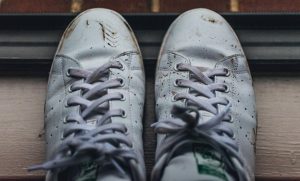
Impurities
From our shoes, through our windows & doors or from our bodies – there are so many things that end up nestled within our carpet fibres. Some of these things can be malodorous in and of themselves, whereas others can act as a substrate to further promote the growth of moulds. Oily impurities can also act as an adhesive and retain other impurities that would normally have come out by regular vacuuming, thus creating a more stable environment in which for other odours to ferment.

Cigarettes
Obviously, anything related to smoking is going to smell. When attempting the removal of such odours, it is important to remember that the carpets are one part of the home that will retain the stench, however other porous surfaces in the home, such as plaster walls, curtains and certain bench tops will also need to be addressed.

Urine
No matter how cute the culprit, urine stains on carpet stink!
Whether from pets or people, urine odours can be difficult to remove, especially if the source is not obvious. Urine odours can also have a tendency to disappear and reappear which we will address further in the “after cleaning” section as it is often related to the moisture levels within the carpet and can sometimes be noticed after cleaning.
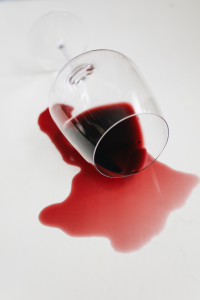
Food/Drink Spills
Just as food left out on the bench will spoil and begin to smell, any traces left from what is spilt on your carpets will too. Such organic spills interact differently with different carpet fibre types. For example, a red cordial stain may be possible to remove from a polypropylene carpet, but is almost always impossible to remove from a wool carpet.

Mycotoxins
Mycotoxins are toxic substances produced by fungus. Not all mycotoxins can be smelt, but they all represent a fantastic reason to have your carpets cleaned regularly. Carpet fibres are great at hosting mycotoxins and there are many kinds of mycotoxins that can have effects on your health ranging from “acute poisoning to long-term effects such as immune deficiency and cancer.” – World Health Organisation (WHO)
Now let’s take a look at the common causes of carpet odours that present after carpet cleaning:
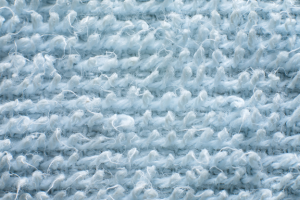
Over-wet carpets
Hot Water Extraction cleaning (HWE) is the gold standard of carpet cleaning and generally the only method recommended by manufacturers. However, it inherently involves spraying a hot water solution into the carpet as part of the cleaning process. Over-wetting of carpets whilst cleaning generally has one of two (or sometimes both) factors – inexperience of the cleaner & insufficient suction from the machine used. In the case of inexperience, this is one of the most common mistakes that people new to carpet cleaning (or those who hire a DIY machine) make.
It seems that more water would result in better cleaning – but actually, it results in an entirely new problem when carpets are left too wet. In the case of the suction of the machine, this is especially problematic with machines available for hire and DIY use. This isn’t to say that smaller machines cannot be used effectively (however, we do not endorse DIY carpet cleaning as there is just too much that can go wrong without proper training) but the less powerful the machine, the less water that should be used as less can be effectively extracted from the carpet.
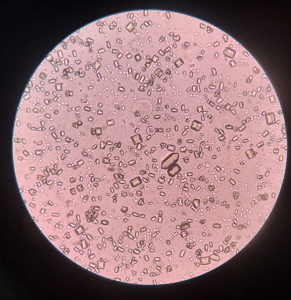
Odour Release
A microscopic image of uric acid crystals in urine.
Certain odours, such as urine, can, for all intents and purposes, go dormant for a time. Cleaning the carpets can release these existing odours back to the level at which they can be picked up by human noses. Taking urine as the main example for odour release, we can take a look at what is actually happening on a physical level. Urine consists of a few elements including urea, a few strains of bacteria and most importantly for this topic, uric acid.
Uric acid can be left behind in carpets as crystals that are not water-soluble and bond well to carpet fibres. This makes them difficult to remove via ordinary cleaning techniques, which is a shame because they are responsible for the pungent urine odour. The smell can seem to dissipate over time, but can be intensified or “reactivated” by moisture. Even high levels of ambient humidity can bring out these odours, but of course, cleaning carpet containing uric acid crystals will bring out the smell unless a deliberate counter measure is made.
Okay, so we’ve covered some of the common causes of carpet odours – but now let’s get to the good stuff.
How to Effectively Counter Carpet Odours
Finally, let’s expand on the topic of Things to Avoid Ever Doing to Any Carpet (MUST READ)
When choosing a carpet, people think about the looks, colour, pattern, style, price and level of comfort as their primary considerations. Rarely do they think about the construction, specific fibre characteristics and effects of water & cleaning solutions – but this latter list forms the primary considerations that need to be factored in when cleaning carpet. “Carpet Cleaning” is not a one-size-fits-all process – there are specific adjustments that need to be made dependent on the following:
- the fibre of the carpet
- the build of the carpet
- the nature of any stains
- the age of those stains
- the method in which carpet dyes were applied
- the Ph tolerance of the carpet
These characteristics can be identified and interpreted by trained, competent and experienced carpet cleaning professionals. Without the proper insight into how the above factors can affect carpet cleaning and especially stain treatments, it is very likely that damage will be done and that a temporary stain may be transformed into a permanent one.
Let’s take for example the Ph tolerance of the carpet.
Odour Source | How to Identify as Odour Source | Remedy | Avoid |
Minor Excess Moisture | Damp smell, carpet feels moist and may be darker in the effected area | Check for source of moisture and eliminate cause (e.g roof leak) - blot up any excess water with a clean white towel - encourage air flow to the area (e.g open a window or turn on a fan) and use dehumidifiers (e.g refrigerated air conditioning, fresh cat litter placed over paper towel on effected area) | Use of coloured towels as colour transfer staining may occur - direct contact |
Major Excess Water/Flooding | Carpet is sodden and clearly darker than dry areas of carpet | Check for source of moisture and eliminate cause (e.g flooding washing machine) - blot up any excess water with clean white towels - call professional carpet cleaners for proper extraction and best chances of recovery | Use of coloured towels as colour transfer staining may occur - pulling up the carpet as wet carpet may shrink back and then require stretching when re-laid |
Mould | Typically you will see the mould before you can smell it - dark growths spreading from an area that must have/have had excess moisture | Check for source of moisture and eliminate cause (e.g condensation from poor ventilation) - call professional carpet cleaners, fully removing mould from carpet without damaging the carpet is generally impossible | Use of any chemical treatment (especially bleach) as the Ph level may be unsuitable and damaging to your carpet |
Impurities | Impurities will be hard to identify unless the odour is distinct enough to recognize on its own - otherwise ID impurities by process of elimination | Call professional carpet cleaners as the impurities that are within your carpets will not come out just from normal vacuuming | Use of DIY carpet cleaners as even if you do everything right, you still cannot get close to professional results |
Cigarette Smoke | Distinct and unique odour, easily identified | Call professional carpet cleaners as cigarette smoke odours will only come out with specialized treatments | Use of any chemical treatment as the Ph level may be unsuitable and damaging to your carpet |
Urine | Distinct odour, easily identified, the area may also be discoloured especially if the stain is fresh | Wear disposable gloves and blot up any excess with a clean white towel - place a bowl of vinegar near the affected area to absorb smells from the air - call professional carpet cleaners for proper treatment and stain removal | Use of coloured towels as colour transfer staining may occur - use of any chemical treatment (especially bi-carb) as the Ph level may be unsuitable and damaging to your carpet - letting vinegar contact the carpet |
Food/Drink Spills | Can often be easily identified by colour and smell based on what has been consumed recently | Blot up excess with white paper towels - call professional carpet cleaners for proper treatment and stain removal | Use of coloured towels as colour transfer staining may occur - use of any chemical treatment as the Ph level may be unsuitable and damaging to your carpet |
Mycotoxins | Can be odourless or have a wide variety of pungent odours - generally if mycotoxins have reached the point of emitting odour, there will be other odours as well and it is clear that cleaning is required | Call professional carpet cleaners for advice on whether the carpet is salvageable or should be replaced | Use of any chemical treatment (especially bleach) as the Ph level may be unsuitable and damaging to your carpet |
Over-Wet Carpet | Carpets have not dried within 24 hours of cleaning | Call professional carpet cleaners - if it was their clean they should definitely fix it for free, if it was a DIY clean they will be able to help extract more water and hasten the drying time | Inaction, time is of the essence |
Released Odours | Odours that seem to emerge after carpet cleaning in specific areas of the home or that have a specific scent such as urine | Call professional carpet cleaners for proper odour treatment and any stain removal - for a temporary or DIY fix, place a bowl of vinegar in the affected area(s) | Use of any chemical treatment (especially bi-carb) as the Ph level may be unsuitable and damaging to your carpet - letting vinegar contact the carpet |
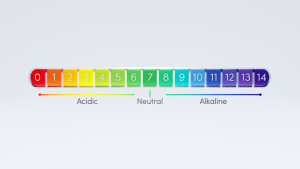
What is Ph?
The pH scale is logarithmic to the power of 10 and so a value of 0 is a million times as acidic as a value of 6.
Potential of Hydrogen (Ph) is the measure of the concentration of hydrogen ions in a liquid substance. 7 is neutral on the pH scale (e.g pure water) and then the scale runs up to 14 (e.g caustic soda) on the alkaline side and down to 0 (e.g battery acid) on the acid side. The scale is logarithmic to the power of 10 so each whole number away from 7 (nuetral) is 10 times as acidic or alkaline than the previous. For example, if we counted 8 on the scale (e.g sea water) as having a value of 10, then 9 on the scale (e.g baking soda) would have a value of 100 and 10 on the scale (e.g hand soap) would have a value of 1000.
So the difference between numbers on the pH scale gets quite severe quite quickly. But why does this matter for carpet cleaning?
Different carpet fibres have different pH range tolerances. One common “carpet cleaning home remedy” that is readily found with any web search relating to stain removal is bicarb. Above, we used bicarb as the example of 9 on the pH scale, but in reality it can vary, though typically it will measure between 8 and 9. So if you were to use bicarb to spot treat a stain on your carpet, even if you successfully remove the stain, you are going to have one patch of carpet left sitting with a residual pH of around 8 or 9.
Taking wool carpets as an example, they have a residual pH tolerance of 5.5-7.0 since wool in its natural state sits slightly on the acidic side of the scale. So if bicarb is used on a woolen carpet, then even if the stain was completely removed, a new mark will appear in the area treated with the bicarb and this mark is a chemical burn that cannot be removed as it has damaged the very fibres themselves.
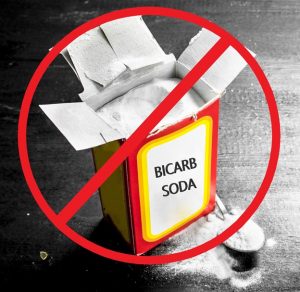
Bicarb soda has a pH value of between 8 & 9 and can damage certain carpet fibres.
What do the professionals do?
At Ballarat Cleaning Specialists, we have an extensive tool kit of treatments that we can use for carpet cleaning and sometimes we may even use a higher pH chemical to clean a specific stain from a wool carpet. However, we do so sparingly and then ensure that the treated area is thoroughly extracted before finally giving it an acid rinse to return the residual pH level to within the tolerated range. It is simply not practicable for someone without the proper equipment and experience in this area to perform stain removal treatments – each unprofessional treatment is a gamble.
In Summary
Take good basic care of your carpets – but if there is a spill or stain, don’t experiment with chemicals or home remedies. The cost of error will far exceed the cost of professional cleaning and treatments. Contact professional carpet cleaners before things get worse.

